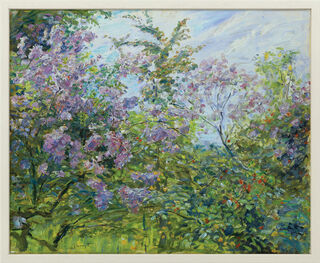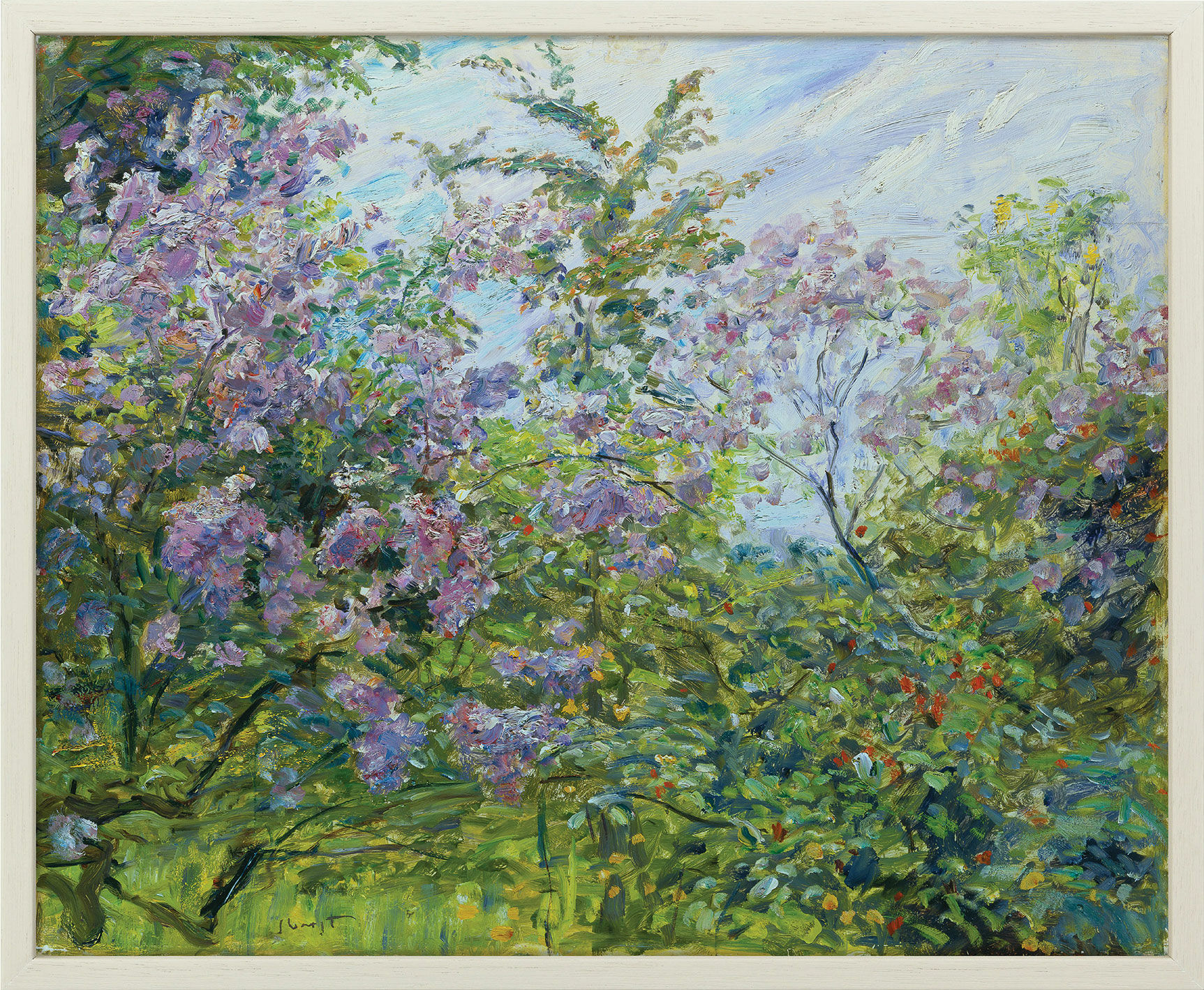Picture "Flowering Lilacs" (c. 1921), framed


Picture "Flowering Lilacs" (c. 1921), framed
Quick info
ars mundi Exclusive Edition | limited, 499 copies | numbered certificate | reproduction, Giclée print on canvas | stretcher frame | gallery frame | size 69 x 57 cm
Detailed description
Picture "Flowering Lilacs" (c. 1921), framed
Sojourns in nature, plein air painting, that's what the three most famous German Impressionists Lovis Corinth, Max Liebermann and Max Slevogt, had in common. As driving forces of the Berlin Secession, they revolutionised art at the time of the Empire. In 1917, Slevogt was appointed head of a master studio for painting at the capital's Academy of Arts. In addition to his stage sets, he devoted himself to landscape painting.
Original: Oil on canvas Städel Museum, Frankfurt am Main.
Brilliant, authentic reproduction in Fine Art Giclée directly on artist's canvas made of 100% cotton, mounted on a stretcher frame. In handmade, whitewashed gallery frame. Limited edition of 499 copies, with a numbered certificate on the back. Size 69 x 57 cm. Exclusively at ars mundi.
Customer reviews
Gut
Graphic or sculpture edition that was initiated by ars mundi and is available only at ars mundi or at distribution partners licensed by ars mundi.
Giclée = derived from the French verb gicler "to squirt, spurt".
The giclée method is a digital printing process. It is a high-resolution, large-format printout on an inkjet printer with special different-coloured dye- or pigment-based inks (usually six to twelve). The colours are fade-proof, i.e. resistant to harmful UV light. They have a high richness of nuance, contrast and saturation.
The giclée process is suitable for art canvases, handmade and watercolour paper as well as for silk.
The style of Impressionism, which emerged in French painting around 1870, owes its name to Claude Monet's landscape 'Impression, Soleil Levant'. After initial rejection, it began a veritable triumphal procession.
Painters such as Claude Monet, Edgar Degas, Edouard Manet, Auguste Renoir and others created motifs from everyday life, urban and landscape scenes in bright, natural light.
Impressionism can be seen as a reaction to academic painting. The emphasis was not on content with its strict rules of painting structure, but on the object as it appears at any given moment, in an often random cut out. The reality was seen in all its variety of colours in natural lighting. The Studio painting was replaced by open-air painting.
Through the brightening of the palette and the dissolution of firm contours, a new approach to colour emerged. In many cases, the colours were no longer mixed on the palette but side by side on the canvas so that the final impression lies in the eye of the viewer with a certain distance. In "Pointillism", (with painters such as Georges Seurat or Paul Signac) this principle was taken to the extreme.
Outside France, Impressionism was taken up by painters such as Max Slevogt, Max Liebermann and Lovis Corinth in Germany, and by James A. M. Whistler in the United States.
However, Impressionism was only expressed to a limited extent in the art of sculpture. In the works of Auguste Rodin, who is considered one of the main representatives, a dissolution of surfaces is evident, in which the play of light and shadow is included in the artistic expression. Degas and Renoir created sculptures as well.






